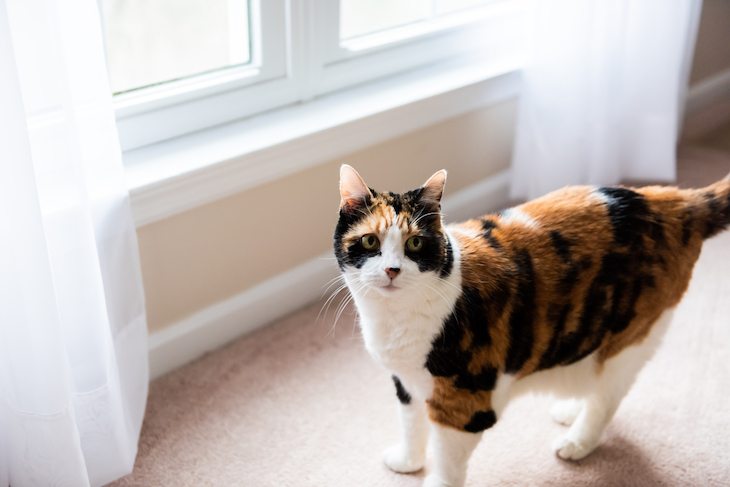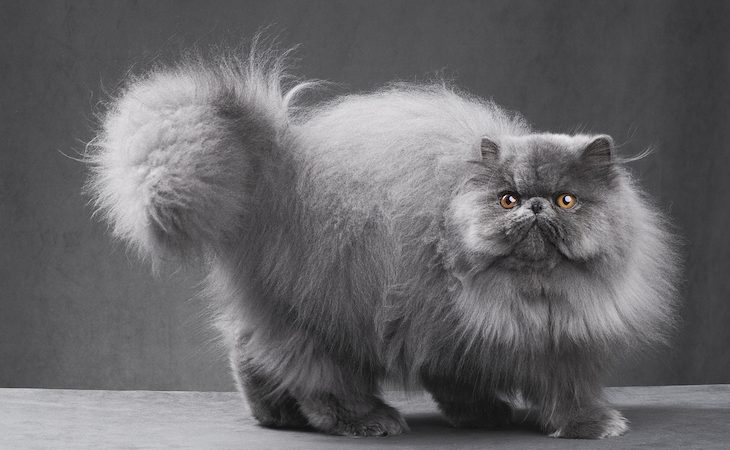A cat’s coat is a magnificent sight to behold. Whether long or short, single-colored or multi-colored, the variety is immense with a range of colors and markings unique to each feline.
Thanks to thousands of years of cross-breeding, our feline friends sport an incredible range of coat colors and patterns. No two markings are ever the same, much like the personality of each cat.
Despite what many people think, colors and markings aren’t specifically linked to breeds. This can make it more complex to understand the exact roots of your feline. However, there are some interesting facts about colors and patterns that might be of interest to you in learning more about your four-legged fur friend. Calico cats are just one example!
Coat colors
Depending on the source, expert, or even organisation, the number of officially recognised cat colors differs slightly but are more or less the same. Basically, there are many!
However, like us, you might be fascinated to learn that black and red (orange) are the two primary coat colors for all cats – just that there are variations of these colors. The exception applies to white cats as the white technically masks either a black or red color.
To simplify a more complex scientific explanation, it is the genetic differences of the color genes that result in the array of different colors, shades and markings of these black and red cats.
As there are many complexities to the make-up of the genes that create each color variation, for another day perhaps, we’re going to look at the most common color variations recognised by the majority of cat associations around the world. They include:
- Black
- Blue (often called grey)
- Champagne (dilute of red, also called honey-beige, tan or yellow)
- Chocolate (rich brown, often called sable)
- Cinnamon (reddish-brown)
- Cream (dilute of red, also called sand or beige)
- Fawn (beige-toned lilac)
- Lilac (or lavender, although some differentiate between the two)
- Platinum (soft grey with undertones of fawn)
- Red (often called orange, ginger or marmalade)
- Sepia (soft brown)
- White
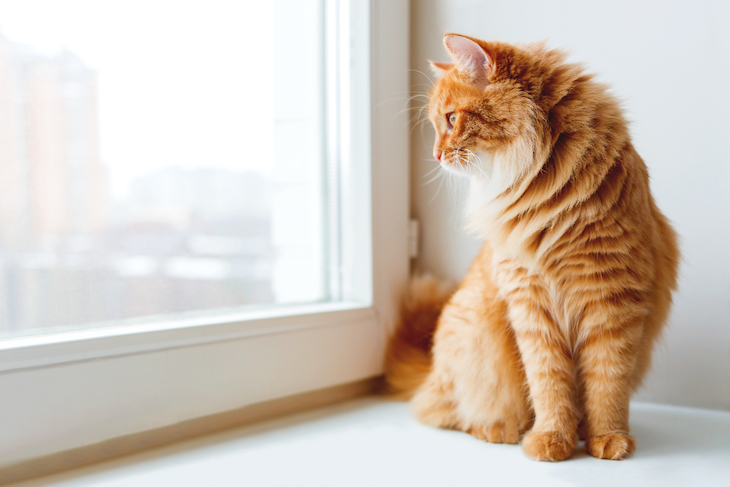
Color patterns
In addition to coat colors, there are numerous color patterns that comprise both purebred and other domestic cats. Given the extensive number, we have broken these down into six of the most popular pattern types you are likely to be most familiar with.
Solid-color
Solid-colored, or self-colored coats, simply refer to those of one distinct color. Although some cat coats appear to be one uniform color, in certain light (for example in sunlight) you might be able to see a faint outline of their underlying tabby pattern. This can often be seen in kittens who are born with a faint pattern only to shed their kitten coat to a solid-colored adult coat.
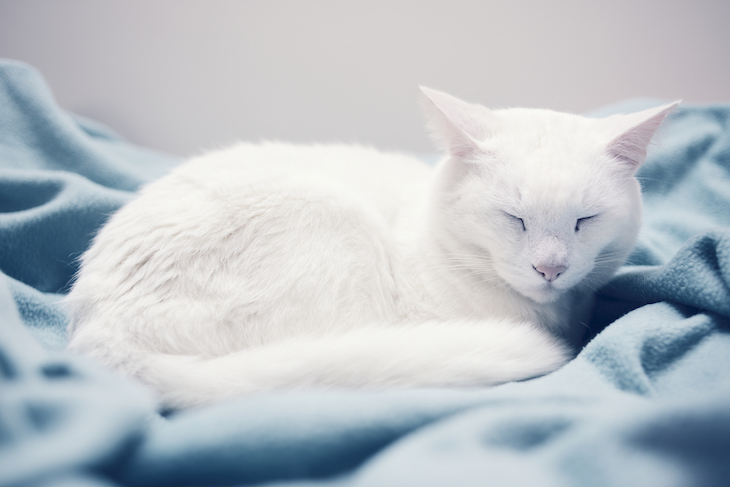
Tabby
Here’s another fun fact for you – all cats are genetically tabby cats. However, whether or not they appear as a tabby (the common stripes and blotches associated with this look) will depend on the color genes that produce the final color and pattern of the cat. For those that sport the distinct look and that we call tabbies, they can be divided into four different types. All sport the trademark ‘M’ marking on their foreheads and have darker lines around their faces.
– Classic (or blotched) tabbies have a combination of stripes, swirls and blotches that contrast against lighter fur (see pic below).
– Spotted tabbies are as the name suggests. These ‘spots’ are the result of ‘broken’ lines or swirls. Some say this coat makes the cat look like a leopard!
– Striped (or mackerel) tabbies have narrow, vertical stripes that run down the body, from the spine to the tummy. A darker line also runs from the neck to the tail.
– Ticked tabbies often have stripes or spots on the neck, chest and points only, and not on the rest of the body. Hairs are also characterised by dark and light banding, although these do not appear as stripes.
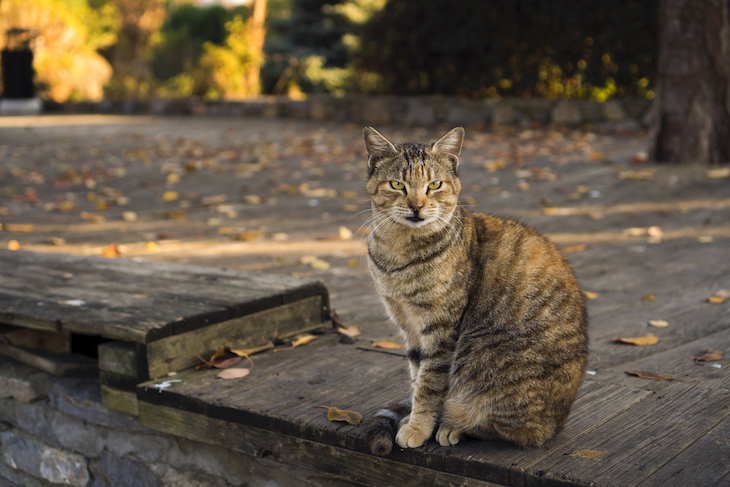
Tortoiseshell
Due to the genetic make-up of tortoiseshell cats, almost all of them are female. Otherwise known as torties, their pattern is made up of a mixture of red and black, or if the diluted gene is inherited then cream and blue. A brindled tortie is one where the two colors are well mixed, while others are much more marked in color variations or blotches. Torties may also contain white for which they are referred to as calico (or tri-colored) cats.
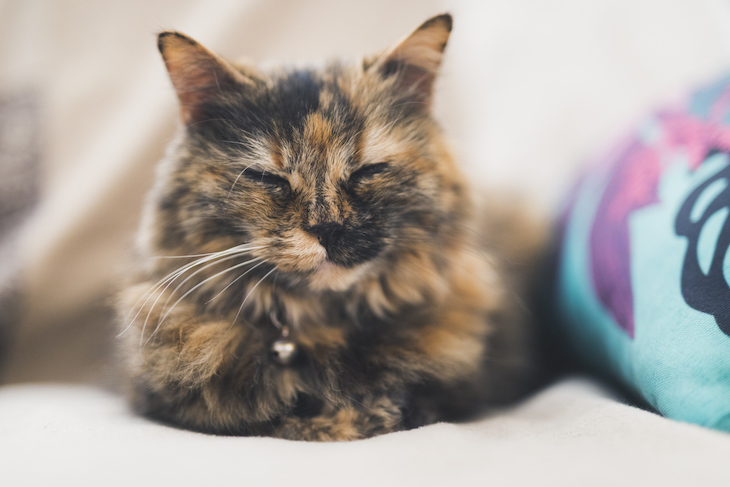
Bi-color
When we talk about a bicolor coat, we mean a coat with two colors, one of which is white. The white can simply be one small patch, or almost entirely solid with just a small amount of one other color – and anywhere in between. Those that are predominantly white with a few patches of solid color are often called harlequins. In the right light, you can notice one of the tabby patterns in the colored patches, even with black fur.
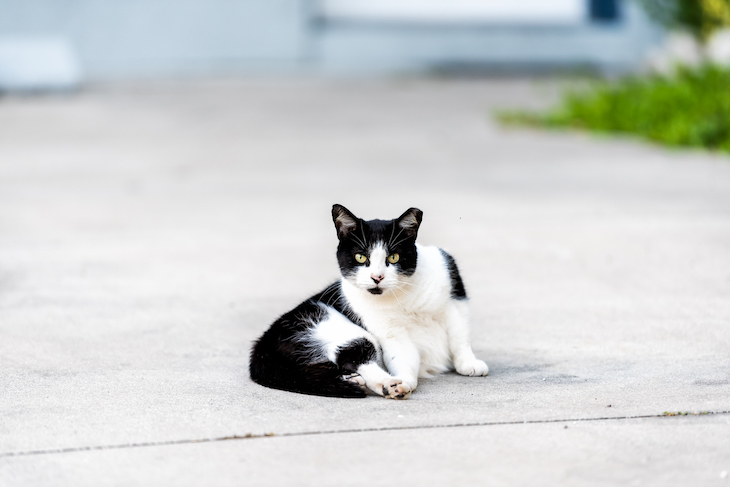
Parti-color
Parti-colored cats refer to those with more than one color. Interestingly, colors and patterns in this coat pattern categorization are often connected to the sex-linked red gene. This gene typically lends itself to female cats. That said, males can be born with this genetic condition but are much rarer and tend to live shorter lives. Calico falls into this parti-color category, as does tortoiseshell (black, chocolate or seal female cat with spots of red), blue cream (blue female cat with spots of cream), and lavender cream (lavender female with cream spots). Depending on the breed, and this is where it gets more technical, so too do bi-color, and tabby and white coats fit into the parti-color classification.
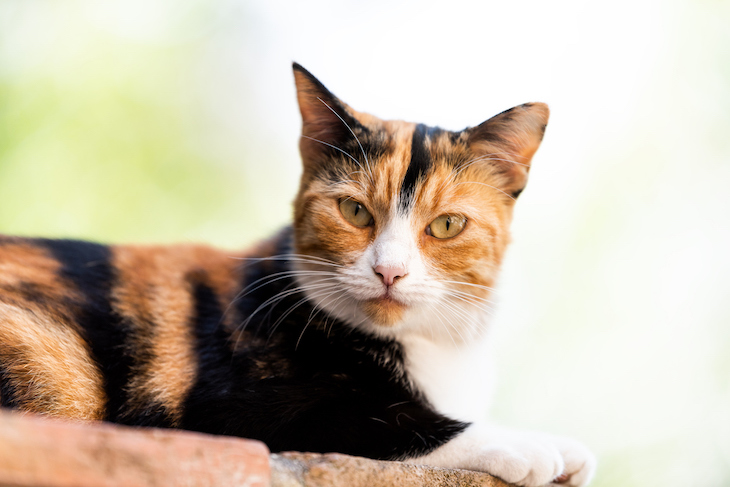
Colorpoint
This is a distinctive coat that is easy to recognise whereby the ears, face, paws and tail are much darker than the rest of the coat. It can often be seen in Siamese and other similar breeds, and marks the coolest extremities of these cats. Kittens will be born without the distinctive color markings but these will develop as they grow.
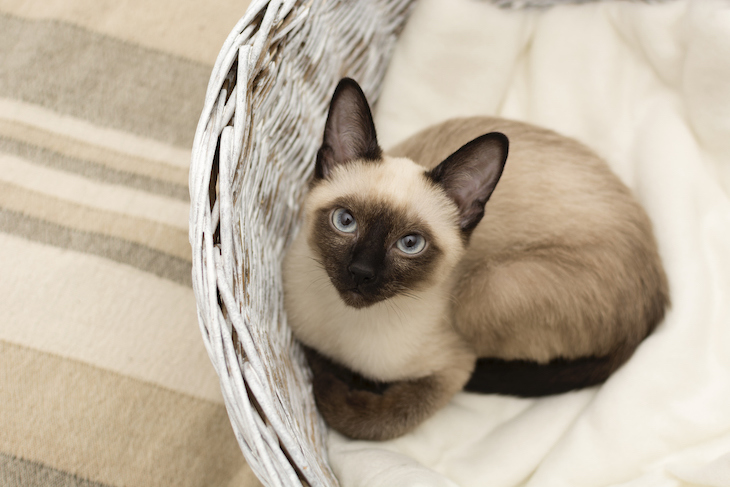
Calico cats
Contrary to what many believe, a calico cat is not actually a breed of cat. The term ‘calico’ refers to the cat’s fur coat (their coat color and fur pattern). It is commonly a parti-color mix of red, white, and black but these basic colors can also vary to include cream, reddish brown, blue-black or blue (grey).
It is impossible to know the origins of these beautiful felines. This is mainly because they do not belong to a particular breed, nor can be intentionally bred to sport a calico coat. Therefore, a calico cat can be a purebred or non-purebred. A study showed that the proportion of cats having the red mutant gene found in calicos was traced to port cities along the Mediterranean, including France, Greece, and Italy.
Of course, all calico cats have different markings; just like fingerprints are unique, no two cats are exactly the same. This means breeders are unable to predict what a calico kitten’s fur will look like. Even the mother’s fur color doesn’t let us predict what her kittens will look like. For example, a calico kitten can be found amongst a litter of grey kittens or a litter of different colors. Their eyes, however, can be orange, green or yellow.
There exist different types of calico cats including ‘dilute’ and ‘tortoiseshell’. In fact, many people often confuse calico cats with tortoiseshell cats. But they do have differences in color. Calicos sport tortoiseshell coat colors except that they also include large white patches. Whereas a non-calico tortie’s colors are more swirled together and predominantly black and red with hardly any white. Dilute calico coat markings are just the same as normal calicos, but the color is less intense, hence the name ‘dilute’.
The calico coat color is also a sex-linked trait associated predominantly with females. While male calicos do exist, they are extremely rare.
